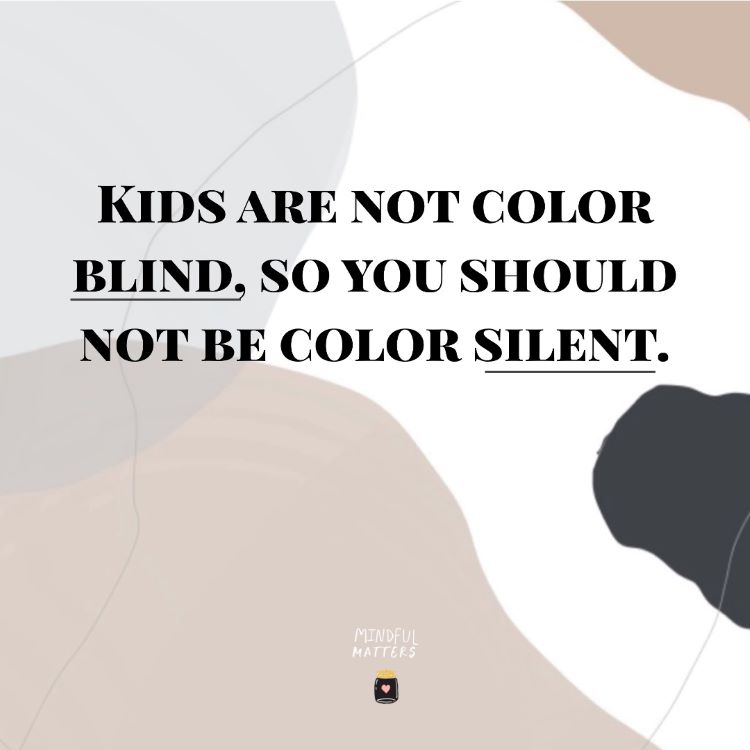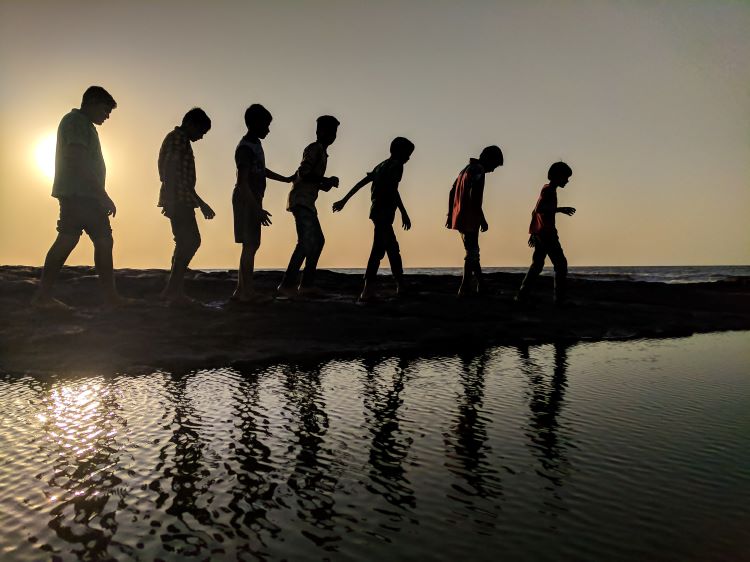By Marwa Saadawi
Do you want to talk to your child, regardless of their age, about race, but not sure how? You are not alone. Most people find this topic difficult to talk about, especially with children. But ignoring the topic of race or staying silent leads to more confusion and stereotypes built into children.
We need to change the conversation and remind ourselves that kids are not color blind, so you should not be color silent. Research shows that children take note of racial differences as early as six-months-old. As kids get older, they take cues from society and home and they get conditioned not to discuss these differences, which leads to more stereotypes, assumptions, and a growing, unspoken divide amongst groups of people. This becomes a systemic problem, making it difficult to fix later on.
It is uncomfortable and difficult to know where to start, below are some points to focus on when starting the discussion on race and discrimination:
Actually Talk About It
This is a conversation all parents need to have no matter your color, religion, background, or experience. Avoiding the topic is no longer an acceptable solution and leads children to come up with problematic and factually inaccurate conclusions, due to the fact that it was not processed or discussed by the parents.

Kids Model What They See
In order to be productive in conversations with children, you need to also model it in your actions and behavior. Be vulnerable and open about what you don’t know and make it clear that you are willing to learn more and become educated on the topic.
The perfect response to questions to which you don’t know the answer is, “Lets research this topic together,” and start sharing articles, talks, movies, books on the topic – mix it up with nonfiction and real-life accounts, but also fiction, poetry, and stand-up comedy are just as insightful.
Instead of just lecturing and having conversations, expose your children to different people, stories, and experiences, as learning about other people’s stories will completely change the way we perceive the world.
Use opportunities to introduce stories of others through different mediums including reading, movies, community chats, webinars and friends. Openly talk to your child about what they are thinking and feeling about different racial scenarios. Also encourage discussion and encourage them to question why things are the way they are – for example, why do some applications and surveys have you check your “race and ethnicity”? What type of inherent biases can be built into this?
For families that are not in diverse or multiracial environments, expose kids to a wider range of media and bring diversity into the home.
Help your child navigate their curiosity
Children have a natural curiosity and easily soak in information – whether it’s in the media, or said by parents. Encourage this curiosity and respond to their questions. When your child asks you, “Why does that person look like that?” use these opportunities to make connections and meaningful points. Shutting down or avoiding conversations by using very curt, short answers signals to the child that something is wrong about the question. It infers that it is impolite to talk about race. Race should not be considered a taboo conversation and bypassing the topic all together creates “blindspots”.
It is vital for parents to also be aware of what their children are questioning, and noticing. Observe and listen to how they absorb information and ask follow-up, inquiring questions such as “What makes you think that?” “What are you noticing?” “Can you explain further?”
When observing or listening to child, try to identify the intention of their question or comment, how they are interpreting it, and the impact your words/comments are having on your child. Being aware of these in constant conversation, will help to identify patterns, biases or missing gaps that may be developing in your child.

Make it relatable
Racism can be difficult to explain to children. A relatable example to get the conversation started would be:
- The common saying of: “but that isn’t fair”, that we all have mentioned at one point or another. Children use that phrase toward their parents often and the most common response is “life is not fair.” Take these types of examples to relate racial injustice issues that come up in conversation.
- Be open minded about addressing mistakes
No matter how well-read and how educated and open-minded you are, it is important to acknowledge that you make mistakes and perhaps unintentionally commit racial bias. It is very important to acknowledge to your children, that others may have different opinions but it’s important to understand where they are coming from and their reasons behind what they’re saying.
Have kids practice often saying “Tell me more.” These three simple words will have a transformative impact in leading to a number of open, honest communication. However open communication only begins with a willingness for both parties to talk and understand.
This allows the other person to share their point of view, and instead of turning a conversation into a useless argument, you have now opened the opportunity for a more meaningful discussion that would hopefully lead to a more open mindset.
Although speaking to children about race and racism is the initial step, it isn’t enough. Kids, and particularly teenagers and young adults, learn about race through their own independent experiences — not just conversations. A person’s peers, teachers, neighbors, coaches, siblings and strangers make a major impact. The neighborhood they live in, the school they attend, and the activities they participate in set the parameters for how kids understand race. This is the reality whether parents are consciously aware that these choices matter or not, & regardless of what parents explicitly say about race.
While there are a number of influences from society, the choices parents make to nurture curiosity, empathy and understanding in children will also influence their words and actions towards race and racism. So start talking and listening and encourage your children to do that with others as well.



